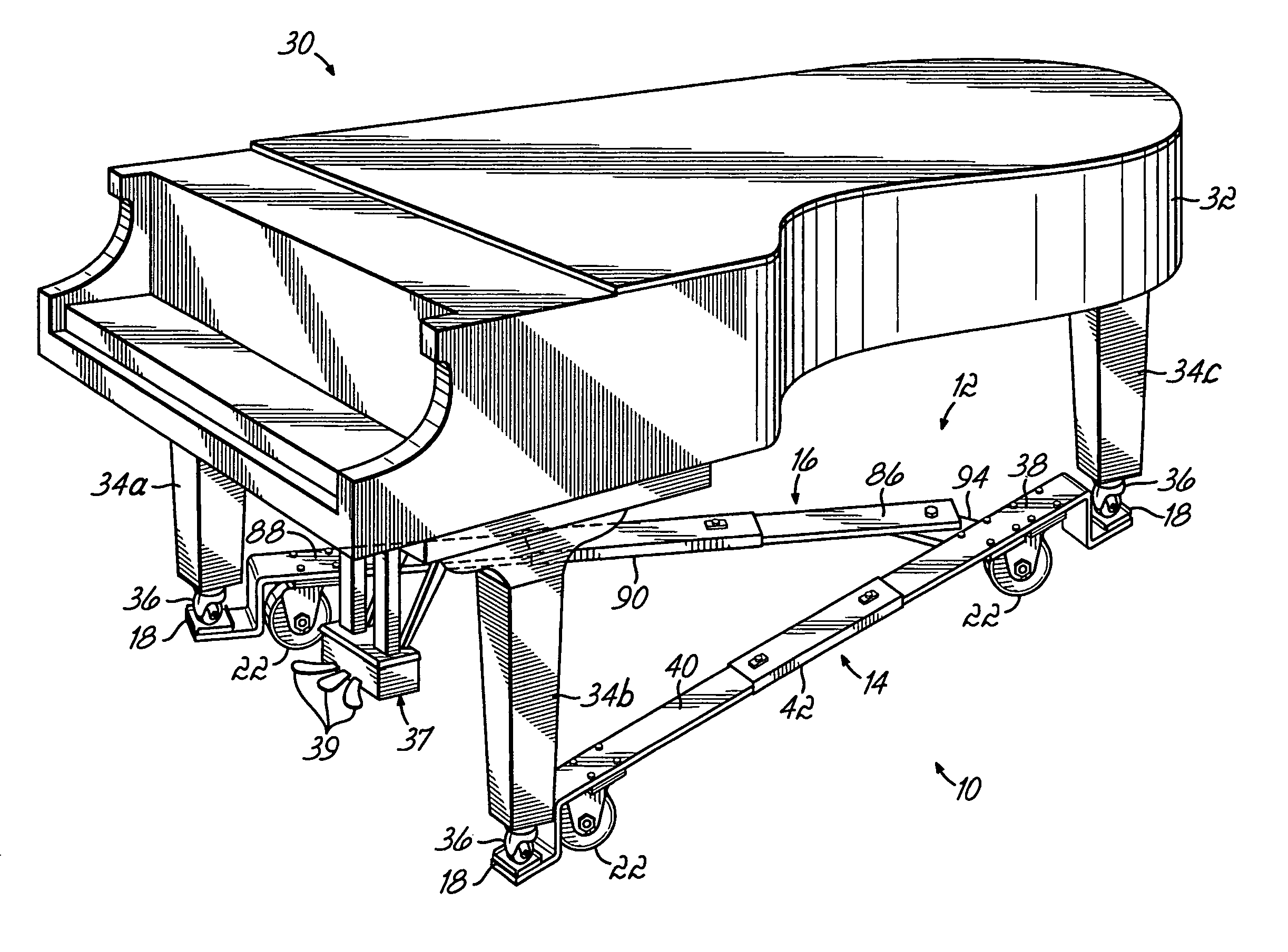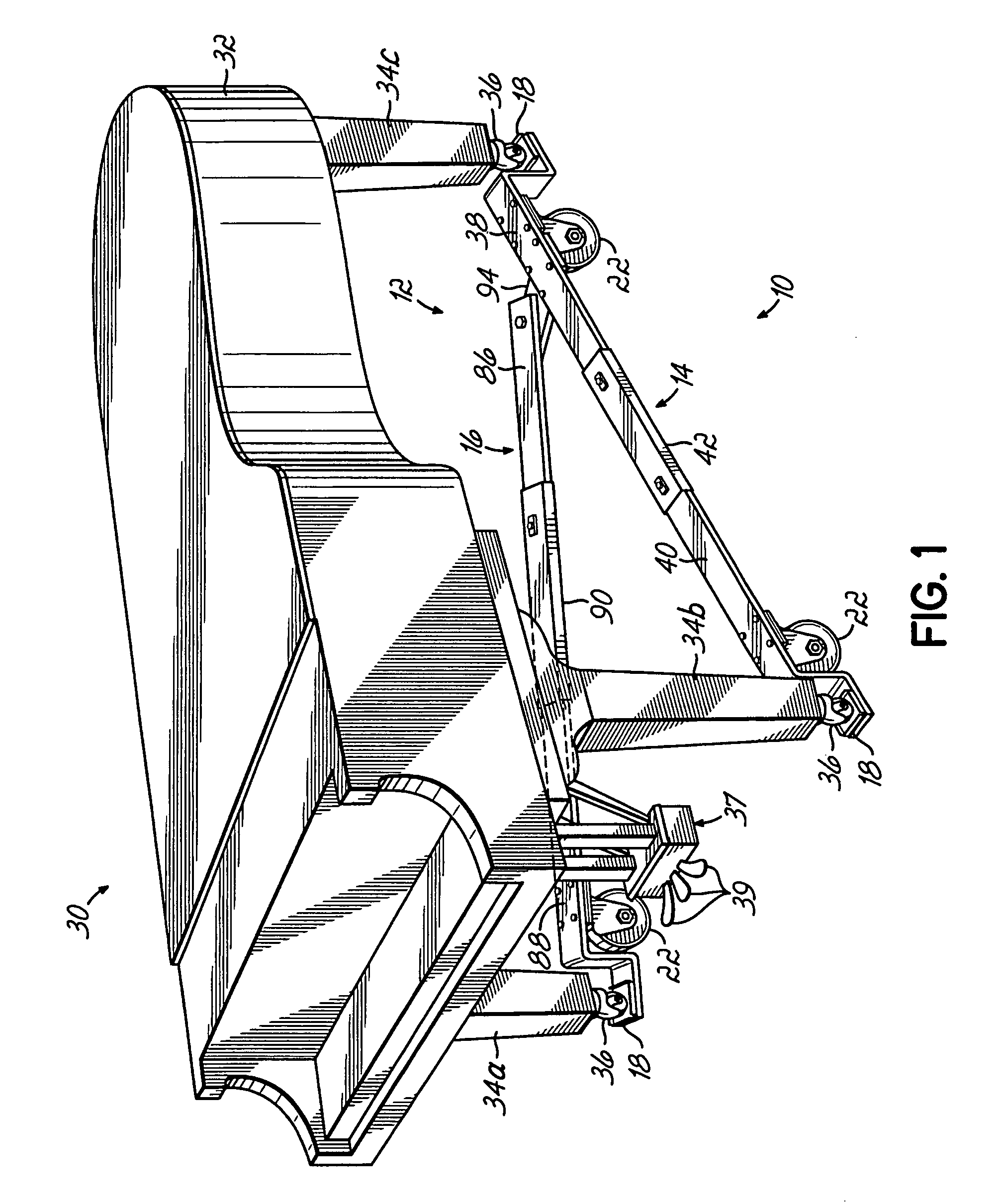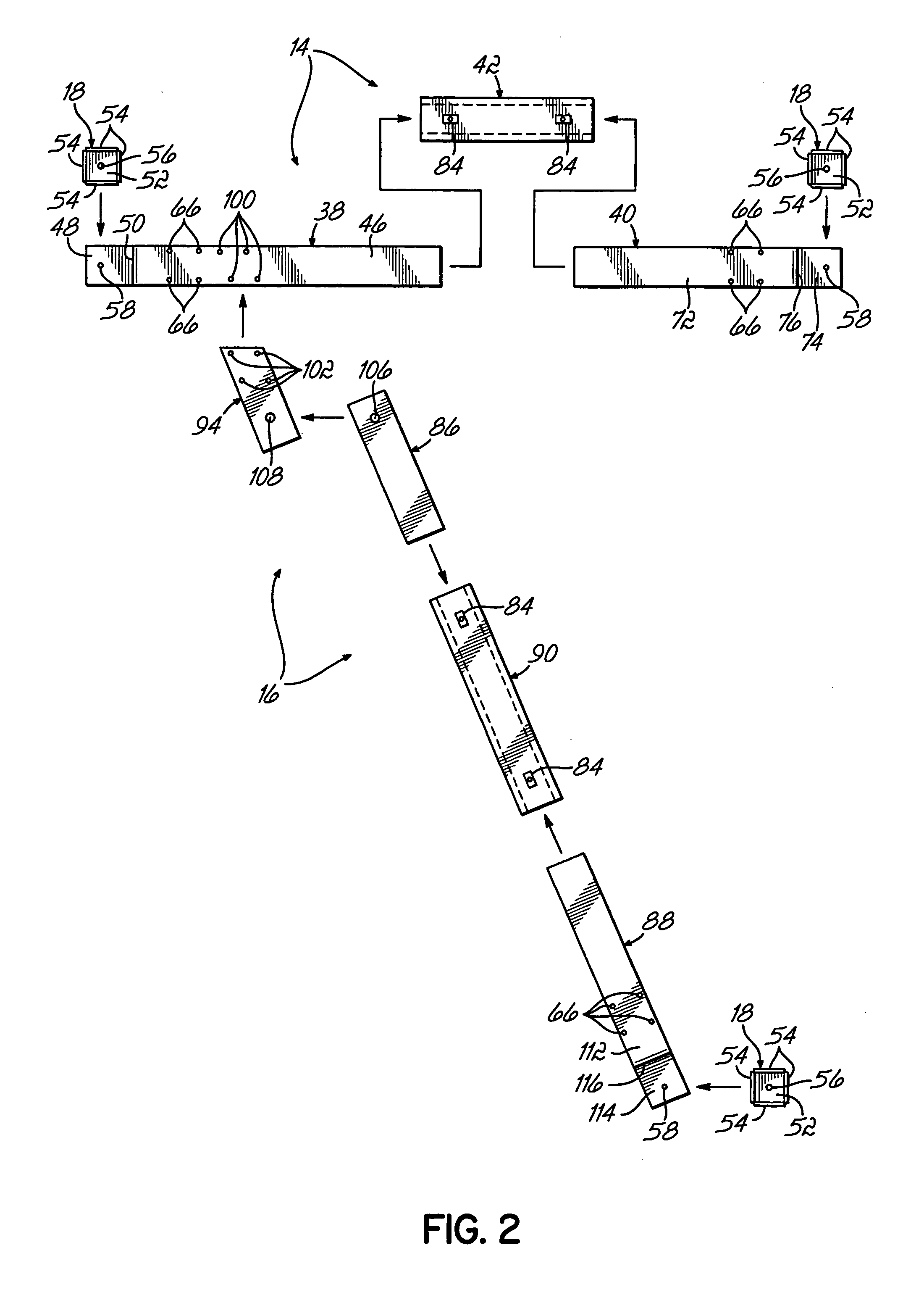Piano dolly
a technology for pianos and dolly wheels, applied in the field of dolly wheels, can solve the problems of pedal lyres precluding the use the design of spider dolly wheels does not lend itself to pre-assembly before shipping, and the pedal lyres are difficult to make in advance, so as to reduce the weight and eliminate the central hub. the effect of the us
- Summary
- Abstract
- Description
- Claims
- Application Information
AI Technical Summary
Benefits of technology
Problems solved by technology
Method used
Image
Examples
Embodiment Construction
[0025] Referring now to the drawings, FIG. 1 is a perspective view illustrating a dolly 10 according to one embodiment of the present invention. The dolly 10 has a base 12 that includes first 14 and second 16 legs. The second leg 16 is pivotally coupled to the first leg 14, for rotation relative to the first leg 14. The dolly 10 further includes a plurality of receptacles 18 mounted to the base 12. As shown in FIG. 1, two of the receptacles 18 are mounted to the first leg 14 and are spaced apart from one another along a longitudinal centerline 20 (shown in FIG. 3) of the first leg 14. The third one of the receptacles 18 is mounted to the second leg 16. Dolly 10 further includes a plurality of conventional casters 22 mounted to the base 12 and operatively effective for rolling along a surface (not shown). Each of the casters 22 is preferably a swiveling-type caster, with each of the casters 22 including a wheel 24, rotatable about a horizontal axis (not shown) passing through the cen...
PUM
 Login to View More
Login to View More Abstract
Description
Claims
Application Information
 Login to View More
Login to View More - R&D
- Intellectual Property
- Life Sciences
- Materials
- Tech Scout
- Unparalleled Data Quality
- Higher Quality Content
- 60% Fewer Hallucinations
Browse by: Latest US Patents, China's latest patents, Technical Efficacy Thesaurus, Application Domain, Technology Topic, Popular Technical Reports.
© 2025 PatSnap. All rights reserved.Legal|Privacy policy|Modern Slavery Act Transparency Statement|Sitemap|About US| Contact US: help@patsnap.com



